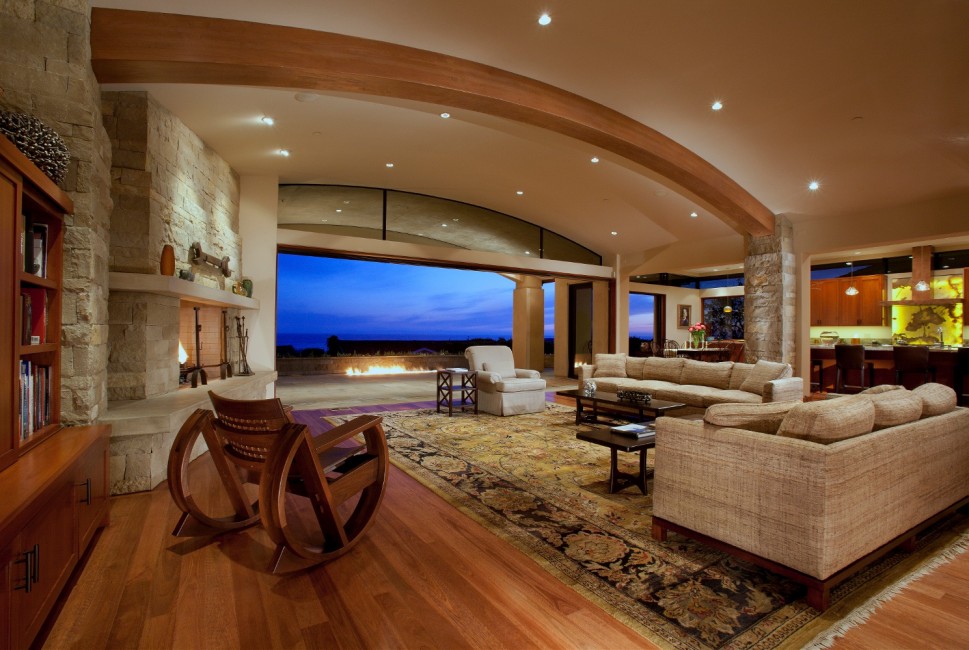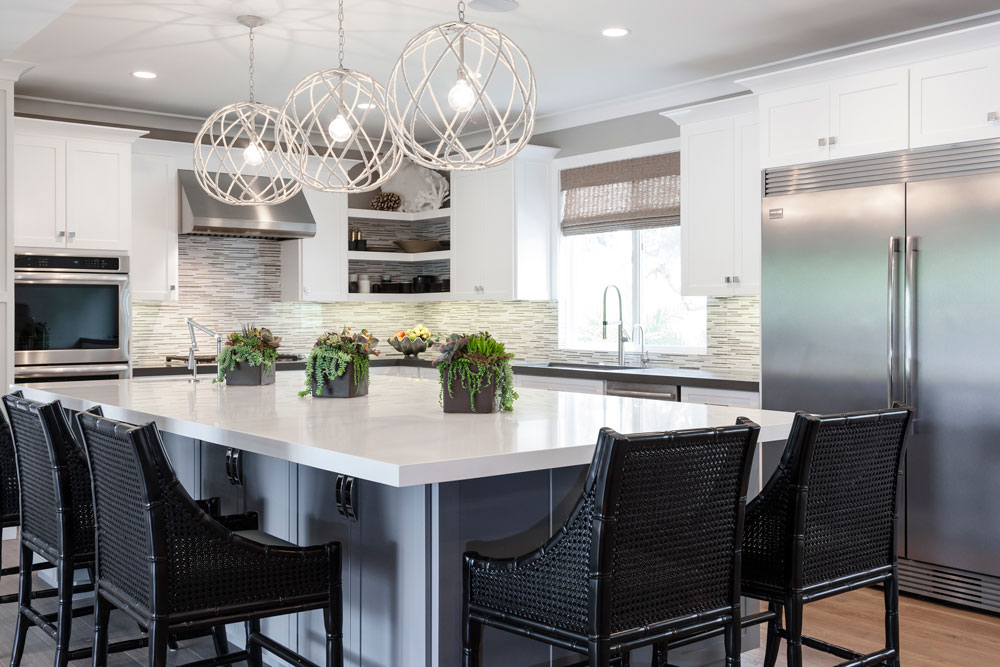Lighting a home uses a design element that brings both beauty and practicality to spaces. Electrical contractor Matt Cook of Newport Coast Electric likes to shine his talents into every angle of a home.
Q: How long have you been in the business?
A: I’ve been an electrician for over 30 years now and the last 23 years specifically with lights. And though I am not certified in lighting design, I’ve worked with some pretty amazing architects and lighting designers and come away with learning the best from the best. I primarily work on residential, high-end custom homes and remodels. It truly is my passion. There’s nothing like flipping on a switch after a job and seeing the effects of my work light up a home.
Q: What was your start in lighting?
A: I had finished high school and took a summer job working with an electrical contractor before going off to college. I was surprised how much I liked the work and decided to go to trade school, then worked as an electrician for about eight years after that. During that time, I worked on all aspects as an electrician and found my passion with lighting and its versatility as an element in creating both indoor and outdoor environments. I’ve been doing it ever since.

Q: Lighting sets the mood.
A: Yes, and I tell this to a lot of my customers. There are three different types of lighting: general, task lighting and accent lighting. General or ambient lighting sets the mood or impression and makes the space safe to move around in. Task lighting provides enough lighting for detailed attention to things, such as in the kitchen or bathroom. And accent lighting could be highlighting a special piece of artwork or space in the room. So you don’t necessarily need task lighting or accent lighting, but you’ll always need general lighting. Learning what is required of the space, lighting can be designed to fit it. Using multiple layers of lighting can provide all three types.
Q: How important is lighting to a house’s design?
A: It is a very important part of it. We use lighting for every day use. It’s important to have soothing light for the eyes and to make it comfortable to live in. Harsh lighting is very uninviting, whereas soft lighting is welcoming. For a home, you want to feel relaxed and happy, not restless and irritable. Lighting affects our mood and can really play a part in productivity and health. I changed out my own fluorescent bulbs in my office to natural lighting and the whole feeling of the room shifted where I can focus more and be more productive.
Q: What are some examples?
A: Adding some perimeter lighting opens up the room and makes it spacious. It can pull light into a cabinet to accent its artistry or maybe what is inside behind the clear glass. You can use the light to shine on counter surfaces in a kitchen. It leaves the room at a nice dimming level where you don’t have to crank up the overhead lighting that is blinding, yet able to continue with tasks such as cooking or just leave for creating a mood.

Q: Do you feel people lean toward a certain style of lighting?
A: Recessed lighting in the ceiling is most popular. Majority of the recessed is can lighting. It lights up the whole room when you turn it on. Put it on a dimmer it becomes accent lighting. Turn it all the way on, task lighting. But to start to think about a certain style or creating a certain mood, add some fixtures. Drop down pendants over a kitchen island or put up some wall sconces in the bathroom. Again, multiple layers create a dramatic difference where you are able to add separate levels of lighting, versus one light source in the room.
Q: How can one tell a good lighting job?
A: Ask yourself, “Is it too dark? Too bright? Is there no control over the lighting? Only one light source?” A good lighting job is personal for sure and to some people they understand how it is a big deal. But for some it’s just about flipping a switch on for light. Yet if they were able to have all the light they wanted at a certain time, then able to dim it down when it’s not so necessary to have so much light, energy is conserved and it creates an atmosphere to relax in. Good lighting provides all that, energy conservation, relaxed inviting environment, and being able to work on detailed tasks.
Q: What are the stages involved in creating a lighting design?
A: Of course it depends on the project. I work with a lot of contractors and they have a set of plans they typically get from the architects. It is my job to make sure the client understands everything out there available to them, to design what they want. Whether it is for a new home or to retrofit into an existing one, I’ll meet with them to make recommendations and put together ideas based on their feedback, the scale of the job and budget.
Q: What is the future of lighting?
A: It’s still with LEDs. They just get better and better. When it first came out, LED was bright blue and harsh. Now it has the full spectrum available to use. Best lighting spectrum for a home is a warmer light in the spectrum, 2700 Kelvin, and should be consistent throughout the home. Maybe an ultra modern home would use a rating of 3,000 Kelvin to complement its structure and mood with brighter, whiter and crisper lighting. I like to use bright light to accent artwork, as well as in the garage for task lighting. Best part of LED is the energy it saves.
CONTACT INFO
Matt Cook
Electrical Contractor and Founder
Newport Coast Electric
892 W. 18th Street
Costa Mesa, CA 92627
949-645-5761
matt@NewportCoastElectric.com
www.NewportCoastElectric.com
By Gina Dostler



